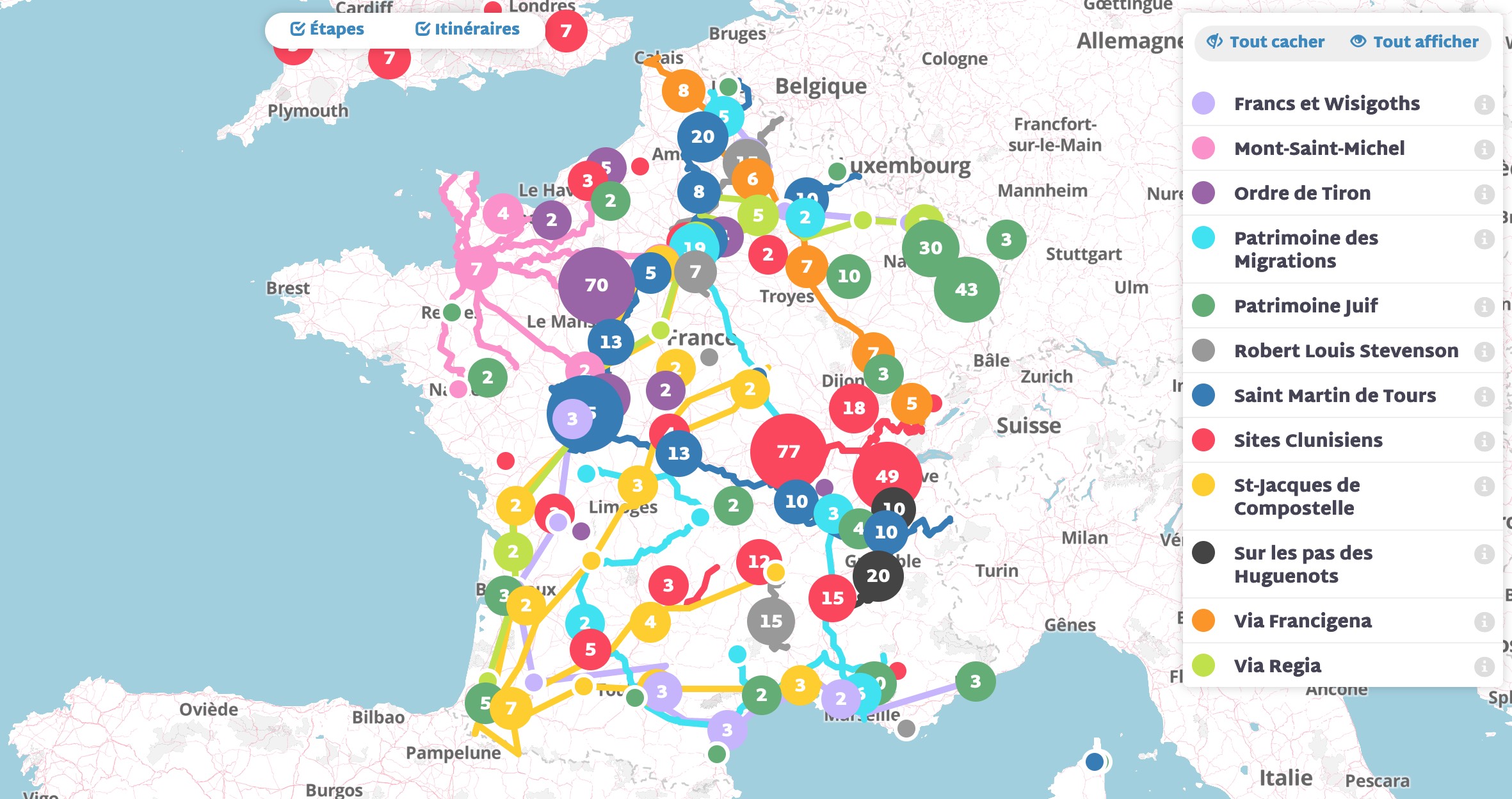
The first map of the cultural routes of the European Council
FFECR in action
The creation of the app « Triangle d’or » (Golden Triangle) is a symbolical action of the FFECR also embodying its values.
The cultural routes
29 Cultural Routes of the Council of Europe are centered around various themes representing the European values.
Values of the FFECR
Based on a set of values, the charter defines the missions of the FFECR as they are written in its statutes.
The French Federation of European Cultural Routes goes now on Internet and it is a really good news for the public who will be able to know better and to embrace these Cultural Routes.
Catherine Lalumière,
Honorary president of the French Federation of European Cultural Routes
Former General Secretary of the Council of Europe
Former Vice President of the European Parliament
Cultural Routes to understand Europe
The background idea of these Routes was born in the 1980’s ; the first one of them, now well-known, was the Ways of Saint James to Compostela. Since then, a lot of new Routes have been awarded : the Cluniac Sites, Mozart, Saint Martin of Tours, the Jewish Heritage, the Via Francigena, the Via Regia, etc.
The starting point of the concept was an observation : over centuries, in Europe, our predecessors were great travellers. They were so because they were building networks of influence or walking for religious pilgrimage. They were so also because they travelled to study in universities, to develop commercial activities, to find work or, like the Jews or the Gypsies, because they were driven out of their home and had to settle somewhere else. And there are also the immigrants, coming from Europe or its close Mediterranean or African neighborhood.
During these moves, these travellers, well- or unknown, carried with them their ideas, their believes, sometimes also their way of working, building, farming, etc.
Nowadays, re-discovering these Routes is a wonderful way to know our past and to understand how was formed the European civilisation, to understand on which ways ideas, arts, technics spread out to form our society.
Catherine Lalumière
At the end, all these Routes tie in with overlayed « cobwebs » or networks that structre the European space and also illustrate the continuous course of ways of living and of thinking, from one end of Europe to the other, from a city to antoher one, from a region to another one. All together, these Routes provide a reading grid that allows to understand the history of Europe, the steps of the shaping of its identity made of the plurality of its culture, trough space and time.
Nowadays, re-discovering these Routes is a wonderful way to know our past and to understand how was formed the European civilisation, to understand on which ways ideas, arts, technics spread out to form our society.
The concept of the Routes, rich and interesting, needs to be based on a precise historical knowledge. This great scientific work leads today to great achievments that allows the Routes to be interesting and appreciated.
The profit temptation : a pitfall to avoid
A trap exists and may distort this programme. The Cultural Routes are a wonderful tool to develop an « intelligent tourism ». It’s great. But the economic and social benefits for territories crossed by these Routes may lead to a temptation : elected representatives, storekeepers, tourism stakeholders trying to shape the Routes according to their particular goals.
The public is certainly happy to visit meaningful places that remind them of historical events, that are part of our culture and that illustrate one side or another of it. But success can lead to boomerang effects. Some people might be tempted to draw a Route based on motives that have nothing to do with historical truth, but rather with mercantile interests, at the expense of values, ethics and citizen concerns on which were build these Routes.
The Cultural Routes of the Council of Europe reveal the cultural history that Europeans share. This is no small responsibility.
Catherine Lalumière
It is a good thing that the Cultural Routes of the Council of Europe have economic and social benefits, but we should never forget that they are based on culture above all and that they aim at raising awareness : the awareness of ways that ideas, arts, discoveries of Europeans followed a path through centuries, from one end of the continent to the other one ; ways of meeting and co-existing, sometimes for the worst, but most of the time for the best, of individuals and groups whose diversity is the richness of the European identity. The Cultural Routes of the Council of Europe reveal the cultural history that Europeans share. This is not a small responsability.





